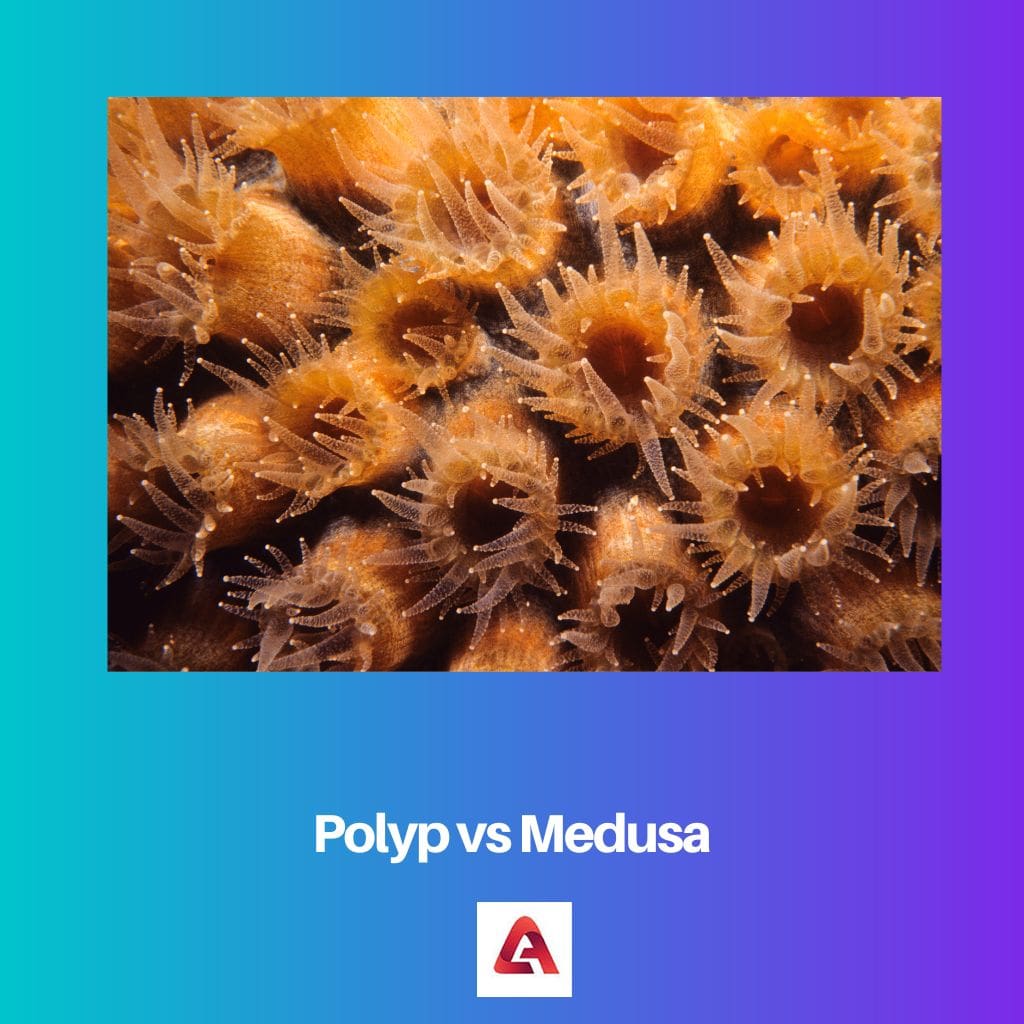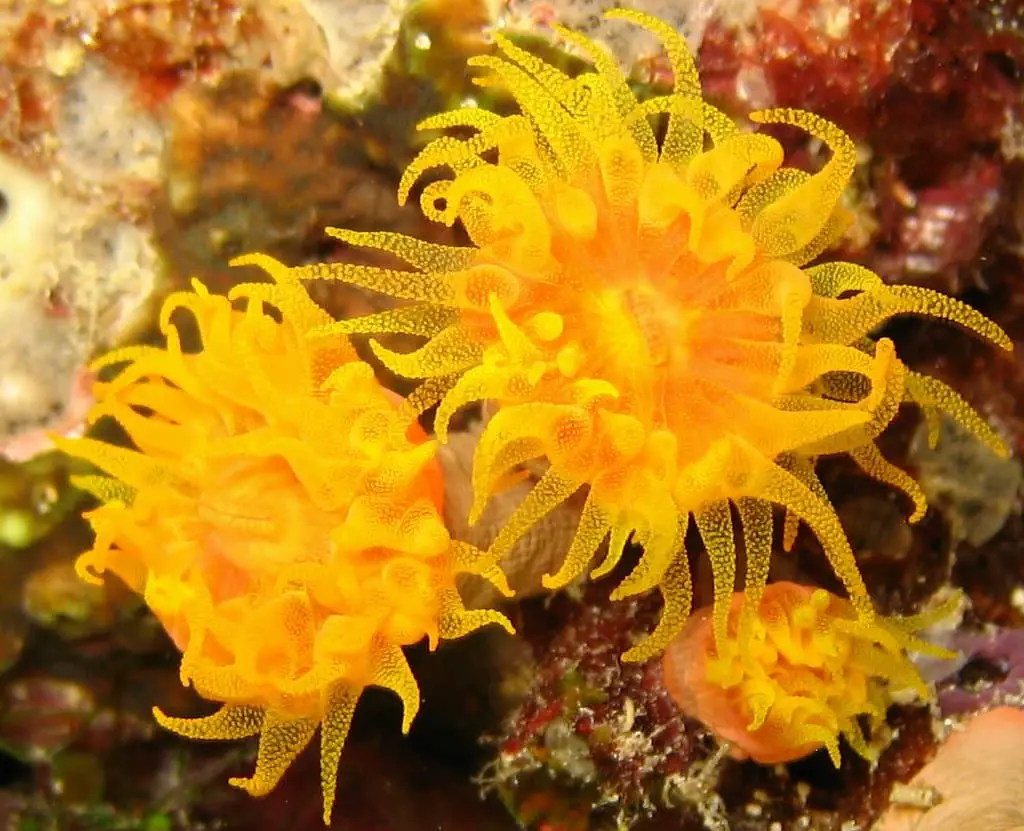The division Cnidaria contains species that only occur in the polyp phase, aka anthozoans, species that only occur in the medusa stage Cnidarians, and species that occur across both life cycle phases are Cnidaria Hydrozoans.
Well, this article only concentrates on pointing out the distinct features and differences between the two phases, i.e., polyp phase and medusa phase of the Cnidaria phylum.
Key Takeaways
- Polyps are sessile, cylindrical, and radially symmetrical organisms commonly found in coral reefs and as part of the life cycle of some marine invertebrates.
- Medusae are free-swimming, umbrella-shaped, and radially symmetrical organisms, representing the reproductive stage in the life cycle of cnidarians like jellyfish.
- Both polyps and medusae are part of the phylum Cnidaria, but they differ in appearance, habitat, and life cycle stages.
Polyp vs Medusa
A Polyp is a small formation of cells that grow on the surface of the body, mostly the mucous membrane. It has a tubular shape and reproduces asexually. Medusa is the movable lifecycle of the Cnidaria phylum organism, it has an umbrella shape/ saucer appearance and it reproduces normally.

In biology, a polyp is one of 2 key body shapes seen in inhabitants of the Cnidarian animal kingdom. The polyp is solitary and sessile and can be isolated, as in a sea anemone, or a coral.
On the other hand, Medusa is the second body form obtained by the Cnidarians. Looking carefully, it is significantly a good example to consider box jellyfish’s common form. The umbrella-like and drooping structure of a medusoid is its key appearance indicator.
Comparison Table
| Parameters of Comparison | Polyp | Medusa |
|---|---|---|
| Locomotion | Polyps are sessile animals that cannot swim and stay attached to the same place forever. | Members of medusae can swim freely in open water. |
| Sensory Organs | No sensory organs are present, and nervosa ring is absent as well. | Statocysts are present, and the sensory part is adradial tentacles which are 8 in number. |
| Reproduction Phase | Reproduces asexually (budding) or sexually, giving birth to either a polyp or medusa. | Reproduces to give birth to a medusa only. The mode is sexual and uses gametes. |
| Body Shape | Cylindrical and tubular structure | Saucer-like and looks like an umbrella. |
| Examples | Sea anemones, sea fans, coral, and sea pens. | Jellyfishes, mawsonites, rhizostomeae, etc. |
What is Polyp?
A polyp is made up of a tube with an opening encircled by tendrils, referred to as a “head,” and a foot-like disc connected to the base. The opening and tendrils point toward the ocean water flow to trap the plankton for food.
Some species of corals are hermaphrodites, and the gender depends upon the temperature of the water they reside in. Budding happens when a spherical area of tissue is evaginated during asexual reproduction.
The creature’s opening or upper mouth is at the opposite end of the cylinder, encircled by tentacles that create the “head.” The mouth and tendrils are pointing toward the water.
Individuals in a swarm of invertebrate sea organisms belonging to the group Bryozoa are occasionally referred to as polyps, although they are referred to as zooids the name for these phyla (polyp) is derived from zooids themselves.

What is Medusa?
Medusa is a Cnidaria phylum organism’s movable life cycle phase. Hydrozoa taxa can take the form of medusas or jellies. A medusa is anatomically created by a bell susceptible to muscular activity, allowing it to move and swim.
The top or aboral exterior has named the exumbrella (which looks like the exterior of an umbrella), and the bottom part is called the subumbrella.
The gastrovascular chamber and projecting tubes that stretch forward towards the edge make up the gastrointestinal cavity; these channels can be basic or branched, and their quantity can range from a few to a lot.
Scyphozoa (the popular, multicolored, big jellies like the box jellyfish) and Cubozoa are the most frequent medusa species because those are the only groups in which medusae may be found, except for aquatic hydrozoans.

Main Differences Between Polyp and Medusa
- Polyps have a simpler gastrointestinal system, whereas medusae have a complex digestive system.
- Polyps can reproduce sexually as well as asexually, whereas medusae can only reproduce sexually by gametes.





